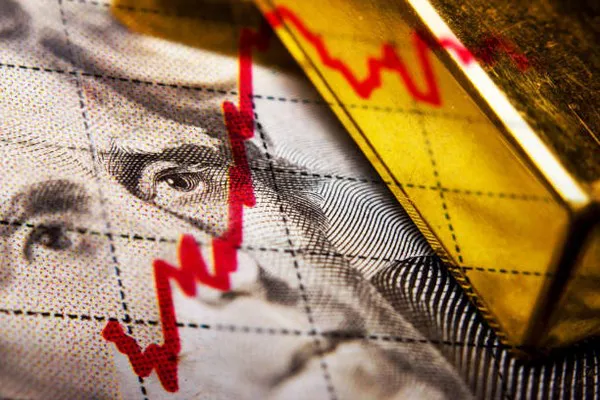Gold has been a symbol of wealth and stability for centuries, attracting investors seeking refuge from market volatility and economic uncertainties. However, determining the best indicator for gold remains a topic of debate among investors and analysts alike. In this article, we delve into various indicators commonly used to gauge gold’s performance and identify the most reliable metrics for investors seeking to navigate the complex landscape of precious metals investing.
Understanding Gold’s Unique Nature:
Before delving into indicators, it’s crucial to grasp the unique characteristics that make gold a distinct asset class. Unlike stocks or bonds, gold doesn’t generate cash flows or dividends. Instead, its value relies on factors such as supply and demand dynamics, inflationary pressures, geopolitical tensions, and investor sentiment.
Historically, gold has served as a hedge against inflation and currency devaluation, preserving wealth during times of economic turmoil. Its scarcity, durability, and intrinsic value contribute to its allure as a store of wealth. Consequently, investors often turn to gold as a safe haven asset during periods of market uncertainty.
Key Indicators for Gold:
Several indicators offer insights into gold’s performance and help investors make informed decisions. While no single metric can fully capture gold’s complex dynamics, a combination of indicators provides a more comprehensive view. Here are some key indicators commonly used by investors:
Gold Prices:
The most straightforward indicator is the price of gold itself. Gold prices reflect the balance between supply and demand dynamics in the global market. Factors such as central bank policies, geopolitical tensions, inflation expectations, and currency fluctuations influence gold prices.
Investors closely monitor gold prices through spot prices, futures contracts, and exchange-traded funds (ETFs) tracking gold prices. However, while gold prices offer valuable insights, they alone may not provide a complete picture of gold’s true value.
Inflation Rates:
Inflation is a crucial determinant of gold prices. As a hedge against inflation, gold tends to perform well during periods of rising prices. When inflation erodes the purchasing power of fiat currencies, investors flock to gold as a store of value.
Economic indicators such as Consumer Price Index (CPI), Producer Price Index (PPI), and inflation expectations guide investors in assessing inflationary pressures. A positive correlation between inflation rates and gold prices underscores gold’s role as an inflation hedge.
Real Interest Rates:
Real interest rates, adjusted for inflation, play a significant role in determining gold’s attractiveness as an investment. When real interest rates are low or negative, the opportunity cost of holding gold diminishes, making it more appealing to investors.
Central bank policies, particularly monetary easing measures such as low-interest rates and quantitative easing, influence real interest rates. Investors monitor central bank decisions and yield curves to gauge the direction of real interest rates and its impact on gold prices.
Currency Strength:
The strength of the US dollar, as the world’s primary reserve currency, inversely correlates with gold prices. A weaker dollar enhances gold’s appeal as it becomes cheaper for foreign investors. Conversely, a stronger dollar exerts downward pressure on gold prices.
Investors track currency movements using trade-weighted indexes, exchange rates, and geopolitical developments affecting currency markets. Understanding the interplay between currency strength and gold prices is essential for forecasting gold’s performance.
Geopolitical Risks:
Geopolitical tensions and global uncertainties often drive investors towards safe-haven assets like gold. Conflicts, trade disputes, and geopolitical instability increase the demand for gold as a safe haven.
Monitoring geopolitical developments, such as conflicts, trade negotiations, and political unrest, provides valuable insights into gold’s future prospects. While geopolitical risks can be unpredictable, they remain a significant factor influencing gold prices.
Determining the Best Indicator:
While each indicator offers valuable insights into gold’s performance, no single metric reigns supreme. The best approach for investors is to adopt a holistic perspective, considering a combination of indicators to assess gold’s true value accurately.
A multi-faceted approach that integrates price trends, inflation expectations, interest rate dynamics, currency movements, and geopolitical risks provides a more comprehensive understanding of gold’s investment potential. By diversifying information sources and analyzing multiple indicators, investors can make informed decisions and navigate the dynamic landscape of precious metals investing effectively.
See Also What Is One-Tenth Of An Ounce Of Gold
Conclusion:
In the realm of precious metals investing, deciphering gold’s true value requires a nuanced understanding of various indicators and their interplay. While no single metric can encapsulate gold’s multifaceted nature, a holistic approach that considers multiple factors offers a more accurate assessment.
Investors must remain vigilant, staying abreast of economic developments, geopolitical risks, and market trends to navigate the complexities of gold investing successfully. By leveraging a diverse set of indicators and conducting thorough analysis, investors can harness the timeless allure of gold as a hedge against uncertainty and preserve wealth in an ever-changing financial landscape.


